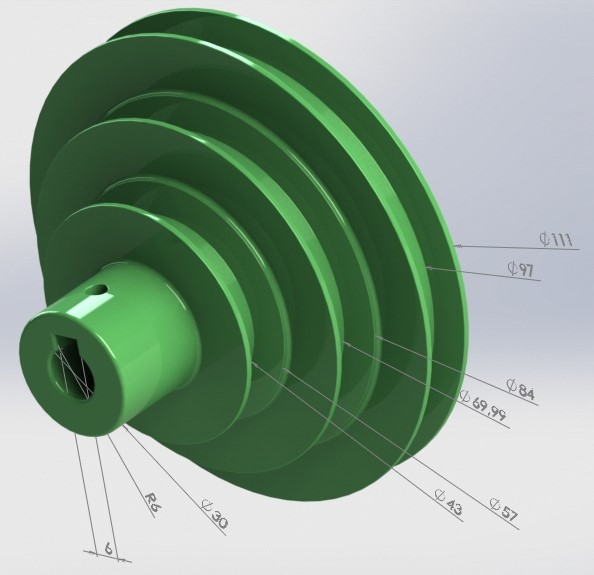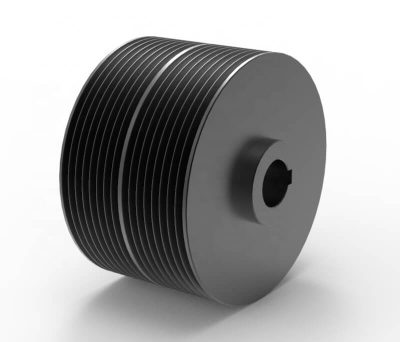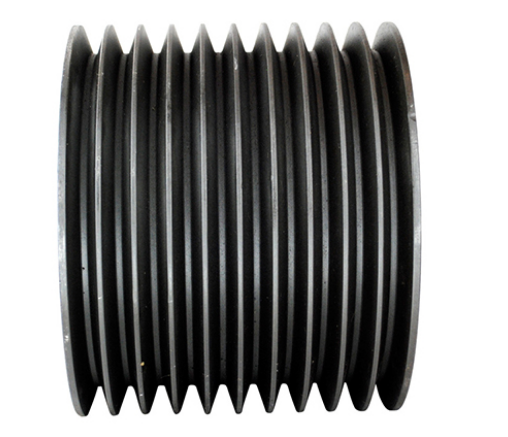Product Description
25 YEARS manufacturer Multiple engine/Size Crankshaft Tensioner, Belt Pulley Single 4BD1 4BG1 Replacement of Many Types of machine excavator.
Our main products:
steel cover lock, filter, oil grid, pump, cylinder head, crankshaft, camshaft, connecting rod, connecting rod bearing, valve, plunger, nozzle, exhaust valve, engine assembly, intake pump , fan blade, engine preheater, radiator, intake valve, main bearing, crankshaft bearing, nozzle, nozzle pipe, oil pump, piston, piston pin, piston ring, plunger, valve seat, thrust bearing, valve guide, valve Seats, valve seals, gasket sets, water pumps, turbochargers, generators, starters, sensors…
Please click here>>>>Contact us for more factory price,shipping and discounts
| ENGINE CUSHION | ||||||||||||||
| NO. | LB NO. | Model | OEM NO. | Name | NO. | LB NO. | Model | OEM NO. | Name | NO. | LB NO. | Model | OEM NO. | Name |
| 1 | KLB-Q3 | BELT TENSIONER | 15 | KLB-Q0017 | SK350-8 4pieces groove | BELT TENSIONER | 28 | KLB-Q0032 | 4BD1 4BG1 A:singlePK B:3PK |
3389198 | CRANKSHAFT PULLEY | |||
| 3 | KLB-Q0003 | 6CT | 3967190 | BELT TENSIONER | 16 | KLB-Q0018 | SK460 3pieces groove | BELT TENSIONER | 29 | KLB-Q0033 | EX200-1/3 6BD1 | CRANKSHAFT PULLEY | ||
| 4 | KLB-Q0004 | EC210 | 462280 | BELT TENSIONER | 17 | KLB-Q0019 | VOLVO360 | BELT TENSIONER | 30 | KLB-Q0034 | 6D31(NEW) | 173*140*34 | CRANKSHAFT PULLEY | |
| 5 | KLB-Q0005 | E325C | 144-1102 | BELT TENSIONER | 18 | KLB-Q571 | S6K | BELT TENSIONER | 31 | KLB-Q0035 | 6D31(OLD) | 160*120*34 | CRANKSHAFT PULLEY | |
| 6 | KLB-Q0006 | PC200-8 | BELT TENSIONER | 19 | KLB-Q0571 | PC60 4D95 | 150*66*43 | CRANKSHAFT PULLEY | 32 | KLB-Q0036 | E200B/320 | 160*113*45 | CRANKSHAFT PULLEY | |
| 7 | KLB-Q0007 | VOLVO210 stainless steel | BELT TENSIONER | 20 | KLB-Q0571 | PC120-6 | CRANKSHAFT PULLEY | 33 | KLB-Q0037 | E320B | 160*110*45 | CRANKSHAFT PULLEY | ||
| 8 | KLB-Q0008 | VOLVO360 | BELT TENSIONER | 21 | KLB-Q571 | PC200-3 6D105 | 144*113*39 6138-31-1480 | CRANKSHAFT PULLEY | 34 | KLB-Q0038 | E320C | 170*143*45 | CRANKSHAFT PULLEY | |
| 9 | KLB-Q0009 | CA016/C7 | BELT TENSIONER | 22 | KLB-Q0571 | PC200-5 6D95 | 150*110*41 6207-31-1410 | CRANKSHAFT PULLEY | 35 | KLB-Q0039 | DH220-5 DB58 | CRANKSHAFT PULLEY | ||
| 10 | KLB-Q571 | VOLVO480 with Belt groove | BELT TENSIONER | 23 | KLB-Q0571 | PC200-6 6D95 | 155*154*42 6209-31-1410 | CRANKSHAFT PULLEY | 36 | KLB-Q0014 | DH | 2107-6004B | BELT TENSIONER | |
| 11 | KLB-Q0011 | VOLVO480 | BELT TENSIONER | 24 | KLB-Q0026 | PC200-6 6D102 | 6735-61-3280 220*54*19 | CRANKSHAFT PULLEY | 37 | KLB-Q0015 | EX | BELT TENSIONER | ||
| 12 | KLB-Q0012 | VOLVO480 | BELT TENSIONER | 25 | KLB-Q0571 | PC300-3 PC400 6D125 | 182*118*43 | CRANKSHAFT PULLEY | 38 | KLB-Q571 | EX200-5 6BG1 3pieces groove | 230*120*40 | CRANKSHAFT PULLEY | |
| 13 | KLB-Q0013 | E320C | BELT TENSIONER | 26 | KLB-Q571 | A:PC300-6 6D108 doublePK | 144*127*40 | CRANKSHAFT PULLEY | 39 | KLB-Q0030 | 4D31 | 168*100*35 | CRANKSHAFT PULLEY | |
1Q:What is your brand?
1A:Our own brand: Mita Group and its range of excavator parts.
2Q:Do you have your own factory? Can we have a visit?
2A:Absolutely, you are alwayswelcome to visit our factory.
3Q:How do you control the quality of the products?
3A:Our factory was obtained the ISO9001CERTIFICATE.Every process of the production is strictly controlled. And all products will be inspected by QC before shipment.
4Q:How long is the delivery time?
4A:2 to 7 days for ex-stock orders. 15 to 30 days for production.
5Q:Can we print our company logo onproduct and package?
5A:Yes, but the quantity of the order is required. And we need you to offer the Trademark Authorization to us.
6Q:Can you provide OEM BRAND package?
6A:Sorry, we can only offer our company ACT BRAND package or neutral packing,blank package ifyou need, and the Buyers’ Brand as authorized.7Q:How long is the warranty period?7A:3 months
| Certification: | ISO9001 |
|---|---|
| Standard Component: | Standard Component |
| Technics: | Casting |
| Material: | Aluminum |
| Type: | Crankshaft Tensioner |
| Lb No.: | Klb-Q0032 |
| Samples: |
US$ 15/Piece
1 Piece(Min.Order) | |
|---|
| Customization: |
Available
| Customized Request |
|---|

Are there any regulations or guidelines for the installation of wall mount pulleys?
Yes, there are regulations and guidelines that govern the installation of wall mount pulleys to ensure safety and compliance with industry standards. Here’s a detailed explanation:
1. Building Codes:
Building codes provide regulations and guidelines for various aspects of construction, including the installation of pulleys. These codes may specify requirements for load capacities, structural integrity, and safety factors. It is important to consult the local building codes to ensure compliance with specific regulations in your area.
2. Occupational Safety and Health Administration (OSHA):
In the United States, the Occupational Safety and Health Administration (OSHA) sets guidelines for workplace safety. While OSHA does not have specific regulations for wall mount pulleys, they provide general guidelines for lifting and rigging operations. These guidelines address topics such as equipment inspection, safe working loads, and proper use of lifting devices.
3. Manufacturer’s Instructions:
Manufacturers of wall mount pulleys typically provide detailed installation instructions and guidelines specific to their products. These instructions outline recommended mounting methods, hardware requirements, and any special considerations for safe installation. It is important to carefully follow the manufacturer’s instructions to ensure proper installation and safe operation.
4. Professional Engineering Standards:
Professional engineering organizations, such as the American Society of Mechanical Engineers (ASME) or the European Committee for Standardization (CEN), develop standards and guidelines for various mechanical systems, including pulleys. These standards define best practices for design, installation, and operation, taking into account factors such as load capacities, safety factors, and material specifications.
5. Industry-Specific Regulations:
Depending on the specific industry or application, there may be additional regulations or guidelines for installing wall mount pulleys. For example, industries such as construction, manufacturing, or entertainment may have specific safety regulations or guidelines that apply to pulley installations in their respective contexts.
6. Professional Consultation:
When installing wall mount pulleys, it can be beneficial to consult with a professional engineer or a qualified contractor with expertise in rigging and lifting operations. These professionals can provide guidance on compliance with regulations, recommend appropriate hardware and installation methods, and ensure that the installation meets safety standards.
It is essential to familiarize yourself with the relevant regulations, guidelines, and manufacturer’s instructions when installing wall mount pulleys. By adhering to these standards, you can ensure the safe and compliant installation of the pulleys, reducing the risk of accidents and ensuring optimal performance.

Are there specific safety considerations when using wall mount pulleys for lifting or rigging?
Yes, there are specific safety considerations that should be taken into account when using wall mount pulleys for lifting or rigging purposes. Here’s a detailed explanation:
1. Load Capacity:
It is crucial to ensure that the wall mount pulleys used for lifting or rigging are rated for the intended load capacity. Exceeding the load capacity can lead to pulley failure, causing accidents or damage. Always refer to the manufacturer’s specifications and guidelines to determine the appropriate load capacity of the pulleys.
2. Proper Installation:
Wall mount pulleys should be installed securely and according to the manufacturer’s instructions. The mounting surface should be strong and capable of supporting the weight and forces involved. It is important to use appropriate hardware and ensure proper anchoring to prevent pulley detachment or failure during lifting or rigging operations.
3. Inspections and Maintenance:
Regular inspections are essential to identify any signs of wear, damage, or deterioration in the pulleys or the mounting hardware. Inspect the pulleys, ropes, cables, or other lifting components for any fraying, corrosion, or deformation. Any damaged or worn-out parts should be replaced immediately. Additionally, perform routine maintenance, such as cleaning and lubrication, to ensure smooth operation and prevent premature failure.
4. Proper Rigging Techniques:
Using proper rigging techniques is critical for safe lifting operations. Ensure that the load is securely attached to the pulley system, and use appropriate slings, hooks, or connectors that are rated for the load. Follow industry best practices for rigging, including proper load balancing, avoiding sharp edges or abrasive surfaces, and maintaining a clear path for the load to prevent entanglement or interference.
5. Personal Protective Equipment (PPE):
When lifting or rigging with wall mount pulleys, it is important to use the appropriate personal protective equipment. This may include safety gloves, safety glasses, hard hats, or other protective gear depending on the specific lifting environment and associated hazards.
6. Training and Competence:
Only trained and competent individuals should operate wall mount pulleys for lifting or rigging purposes. Proper training ensures knowledge of safe practices, load limits, and proper use of equipment. Adequate supervision and adherence to established protocols help minimize the risk of accidents and ensure the safety of personnel involved.
By considering these safety considerations and implementing appropriate measures, the use of wall mount pulleys for lifting or rigging can be conducted safely and effectively, reducing the risk of accidents and promoting a safe working environment.

What is a multiple pulley system, and how does it differ from single pulleys?
A multiple pulley system, also known as a block and tackle system, is a mechanical arrangement that consists of multiple pulleys working together to provide mechanical advantage and facilitate the lifting or moving of heavy loads. It differs from single pulleys in several ways. Here’s a detailed explanation of a multiple pulley system and its differences from single pulleys:
1. Mechanical Advantage:
A single pulley can change the direction of the force applied but doesn’t provide any mechanical advantage. In contrast, a multiple pulley system can offer mechanical advantage by distributing the load across multiple pulleys and ropes. By using several pulleys, the force required to lift the load is divided among the ropes, resulting in reduced effort required by the user.
2. Increased Lifting Capacity:
Due to the mechanical advantage it provides, a multiple pulley system has a higher lifting capacity compared to a single pulley. By increasing the number of pulleys or sheaves in the system, the load can be distributed and shared among the ropes, allowing for the lifting of heavier loads with less force.
3. Rope Length:
In a single pulley system, the length of the rope or cable needed to lift an object is equal to the distance over which the object must be raised. In a multiple pulley system, the length of the rope required is typically longer, as it needs to pass through multiple pulleys and create the necessary mechanical advantage. This longer rope length allows for the reduction of force required to lift the load.
4. Increased Complexity:
Multiple pulley systems are more complex than single pulleys due to the involvement of multiple pulleys, ropes, and the need for proper configuration. The arrangement of the pulleys, the number of sheaves, and the interaction between the ropes must be carefully designed to achieve the desired mechanical advantage and lifting capabilities. This complexity requires additional knowledge and expertise in the setup and operation of multiple pulley systems.
5. Versatility:
Multiple pulley systems offer greater versatility compared to single pulleys. They can be configured in various ways to achieve different mechanical advantages and adapt to different lifting or pulling requirements. By adjusting the number of pulleys or changing their arrangement, the mechanical advantage of the system can be customized to suit specific needs.
6. Increased Friction:
Multiple pulley systems introduce more points of contact and potential friction compared to single pulleys. As the rope passes through each pulley and changes direction, friction can occur, resulting in some energy loss. Proper lubrication and maintenance are necessary to minimize friction and ensure smooth operation.
7. Applications:
Multiple pulley systems are commonly used in various applications where heavy lifting or load manipulation is required. They are utilized in construction, rigging, hoisting systems, sailing, and other industries. Single pulleys, on the other hand, are often used in simple applications where the primary goal is to change the direction of a force without providing mechanical advantage.
In summary, a multiple pulley system differs from single pulleys by providing mechanical advantage, increasing lifting capacity, requiring longer ropes, introducing complexity, offering versatility, increasing friction, and finding applications in different industries. The use of multiple pulleys allows for the efficient lifting and movement of heavy loads with reduced effort and force.


editor by CX
2023-11-21